Caesarean section: preparation and list of necessary things. Caesarean section: everything an expectant mother needs to know
By about 30 weeks, the expectant mother should already have prepared the things she will need to have with her in the maternity hospital. This must be done in advance, as various unforeseen situations may arise, especially if the woman in labor is planning to have a cesarean section.
Preparing for surgery
It is needed to remove the fetus and placenta through an artificially created incision in the wall of the uterus, if the expectant mother cannot give birth to a child on her own or there are contraindications to this. Indications for surgery may include narrowing of the pelvis, severe gestosis, pathology of the fundus and other serious conditions.
A cesarean section can be performed in a maternity hospital on a planned or emergency basis, depending on the condition of the mother or fetus and the presence of serious complications. Preparation for a planned operation begins gradually and a specific date is set in advance, so the pregnant woman has enough time to prepare.
About a week before the operation, the woman goes to the maternity hospital for additional examination. It is necessary to undergo a coagulogram, ultrasound and general blood and urine tests.
The day of surgery should be as close as possible to your expected due date. On the eve of this, it is forbidden to eat heavy and fatty foods; preference should be given to a light dinner. The expectant mother should take a shower and, with the consent of the attending physician, drink a sedative. On the day of the operation, the pregnant woman should not eat or drink, and 2 hours before the cesarean section, a cleansing enema is prescribed.
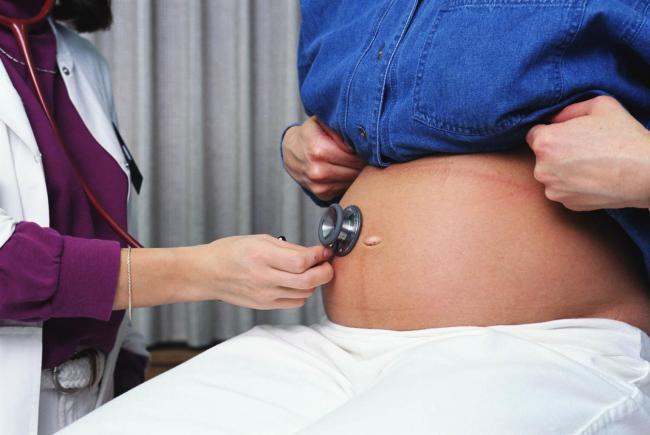
When performing a caesarean section, you will need elastic bandages at least 3 meters long. They are necessary to wrap the mother's legs up to the upper third of the thigh and thereby prevent deep vein thrombosis. They can be replaced with compression stockings.
Also, before the operation, the perineum is shaved, and a catheter is placed in the bladder to prevent it from filling. The pregnant woman puts on a special sterile kit or clean clothes, shoe covers and a cap, then is taken to the operating room.
Epidural anesthesia is used as anesthesia, which is the safest today and is accompanied by the most minimal risks. A few minutes later the operation begins. After birth, the baby is placed on a special clamp on the umbilical cord, weighed, examined, and dressed in clothes prepared in advance.
What will you need in the maternity hospital?
It is advisable to pack a bag with things for the maternity hospital for a caesarean section yourself, in order to take into account everything you need and not forget anything. The expectant mother needs to take the following list of things to the maternity hospital for surgery:
- documents;
- bedding set;
- personal hygiene items;
- things for a newborn;
- medicines.

It is advisable to immediately put things into two separate bags: one for yourself, and the other with things for the child. First of all, you will definitely need a passport and an exchange card, as well as a policy (if you have one). These documents should always be carried with you, especially in the last trimester of pregnancy, because labor can begin suddenly at any time and anywhere.
In addition to them, it is advisable to take mobile phone along with exercises, so that if necessary, you can contact relatives and ask them to bring the necessary things. A notepad and pen will come in handy if you need to write down important information. The bed linen set should include a pillowcase, duvet cover and sheet.
To stay in the hospital, you need to take home slippers, a comfortable robe and a set of spare clothes.
You will also need a set of utensils consisting of a plate, spoon, cup and fork. It is recommended to take with you several soft towels, a toothbrush with toothpaste, soap and shampoo. Underwear must be made of natural fabric so that it does not cause irritation and does not rub the seams that will appear after the operation.
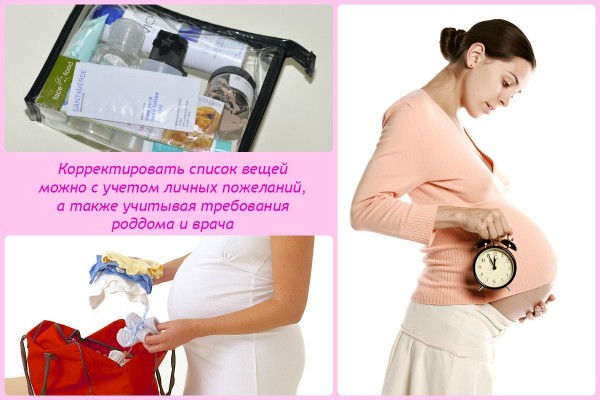
Preference is given to slip panties made of cotton with a soft texture, one size larger and with a comfortable elastic band. It is recommended to take several bras, and they should be equipped with comfortable straps and provide good support to the breasts.
Don’t forget about the special cream for cracked nipples and personal hygiene products for the child:
- powder;
- baby diaper rash cream;
- wet wipes;
- ear sticks;
- oil, etc.
In addition, your baby will need his own set of clothes, which will consist of:
- 6 hats (plain, flannelette);
- 6 vests made of different materials;
- 6 diapers;
- 6 sliders;
- mittens for hands (3 pairs);
- warm blanket.
You should take a whole package of diapers in the smallest size for newborns, with a cutout for the navel. In personal hygiene products, it is imperative to include bulky pads from 4 to 5 packs of maximum absorbency, because immediately after surgery and childbirth they will have to be changed quite often.

For the bra you will need special absorbent pads that will absorb the incoming milk. If you wish, you can bring a book, magazines or other literature with you to the maternity hospital to brighten up your leisure time before the operation.
Postoperative period
The first 12 hours in the maternity hospital after surgery must be spent in bed to make it easier and faster to recover from anesthesia. Under no circumstances should you sit down or get out of bed, make sudden movements, or lift heavy objects. On the day of surgery, you can drink plain still water or weak tea. You can breastfeed your baby immediately after a cesarean section. At first, the effect of the anesthetic drug may cause nausea, sore throat, or vomiting.
For pain relief, the woman in labor is prescribed analgesics, and oxytocin is administered intravenously to contract the uterus.
No later than on the first day after surgery, it is necessary to carry out drug stimulation of the stomach and intestines. For this purpose, prozerin is used and a cleansing enema is prescribed.
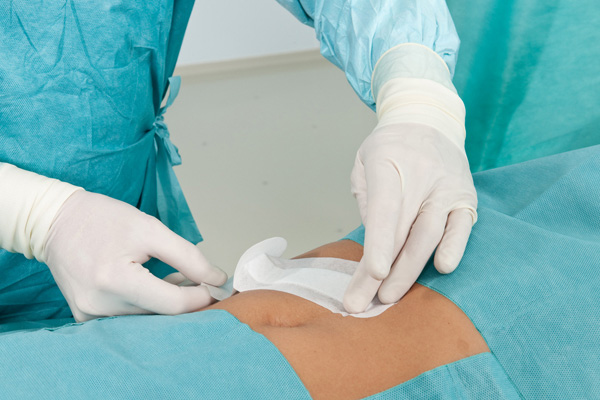
On the second day, you can already eat liquid food: meat broth, liquid porridge or a soft-boiled egg. Food should be at medium temperature and not too hot or cold. Solid foods can be introduced into your diet gradually and in small quantities.
Every day in the maternity hospital, the staff changes the dressing and treats the postoperative suture with a solution of potassium permanganate or iodine solution. Sutures should be removed approximately 7 days after surgery. It is recommended to wear a postpartum bandage, which will prevent the seams from coming apart and help to quickly restore muscle elasticity. Also, for a speedy recovery, it is advisable to do therapeutic exercises and eat right.
Even before discharge from the maternity hospital, the woman is prescribed an ultrasound examination to diagnose complications that may develop after this operation. After the stitches are removed and the general condition is normalized, the woman in labor is discharged and given the necessary recommendations for caring for the baby.
As a rule, the baby is born, confidently and purposefully moving along the birth canal. However, in some clinical situations such a natural process becomes impossible, even dangerous for the child’s body, so there is an urgent need to perform a cesarean section. Such births are called pathological, and the mother will forever have a noticeable scar in her lower abdomen, as a memory of her child’s birthday.
So, caesarean section is a common operation in extensive obstetric practice, which is performed under general anesthesia or epidural anesthesia, and is necessary to remove a viable fetus from the uterine cavity of a woman in labor. But when does it become necessary to carry out such a procedure?
As mentioned above, childbirth is pathological, but most often a healthy baby is born.
If the indications for the operation are determined in advance, then it will be a planned cesarean section, but in case of complications during natural childbirth, it will be an emergency one.The need for such an operation does not always arise, and the following pathologies are indications for its implementation:
- impaired vision;
- narrow pelvis, that is, the inability of the child to pass through the birth canal without additional injury;
- pelvic or breech presentation of the fetus;
- fetal pathologies diagnosed by ultrasound;
- placental abruption;
- entanglement of the fetus with the umbilical cord or its loss;
- multiple pregnancy or heavy weight fetus;
- weak labor activity;
- repeat caesarean section;
- prolonged pregnancy.
It is also worth recalling that medical practice is dominated by diseases that make independent childbirth for the expectant mother life-threatening and physiologically impossible. In this case, we are talking about diagnoses such as bronchial asthma, hypertension, heart failure and other lesions of the cardiovascular system. So women have to agree to a caesarean section according to indications in order to avoid serious problems with health.
Important! A pre-planned operation gives a woman time to mentally adjust and reduce the effects of severe stress that can occur during emergency surgery.
Carrying out the operation
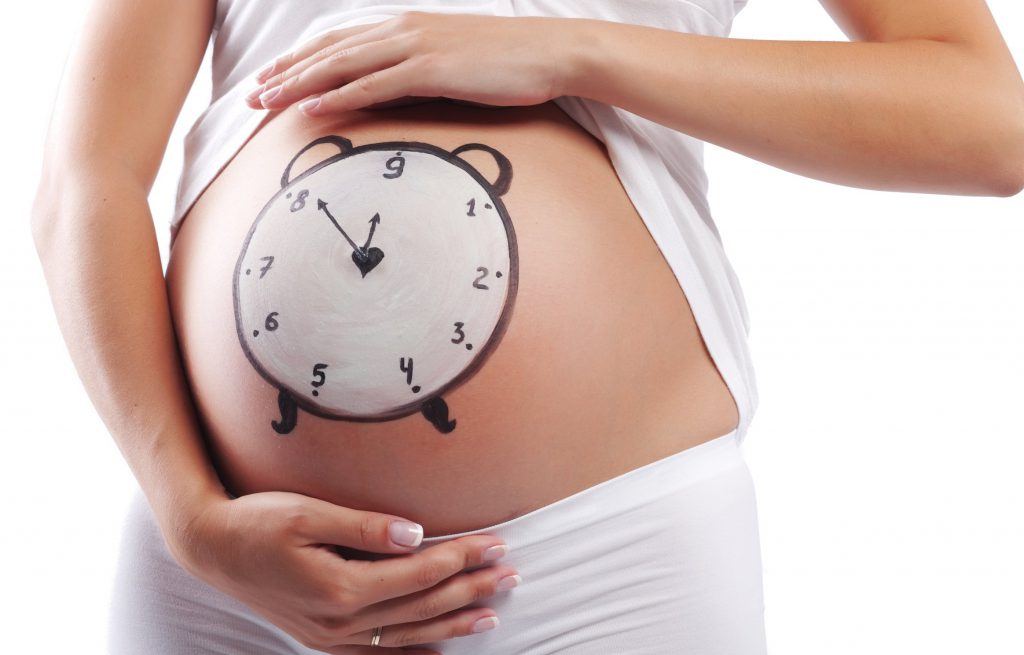 A planned caesarean section assumes that the woman goes to the hospital in advance, but the decision about an emergency operation can be made at any time.
A planned caesarean section assumes that the woman goes to the hospital in advance, but the decision about an emergency operation can be made at any time. So, a caesarean section can be emergency or planned, and the determining factors in the choice are the condition of the woman in labor and the indications. If a woman knows about the presence of contraindications to natural childbirth in her body, then she is mentally prepared for a planned caesarean section, and the day and time are negotiated individually by the doctor. Here it is necessary to go to the maternity hospital in advance for safekeeping so that doctors can perform all laboratory tests, minimizing the threat of the upcoming operation.
But there are cases when an expectant mother enters the maternity ward with regular contractions, and is sure that she will give birth on her own. It would seem that everything is predictable, but immediately before the birth, during a routine ultrasound, it becomes obvious that the baby’s neck is entwined with the umbilical cord, or he is again in a breech position. So it is necessary to act immediately, and an emergency caesarean section becomes a true salvation for mother and child. A woman is operated on unexpectedly, but the skillful actions of the surgeon and the effective work of the anesthesiologist make it possible to avoid both women’s diseases and children’s congenital pathologies.
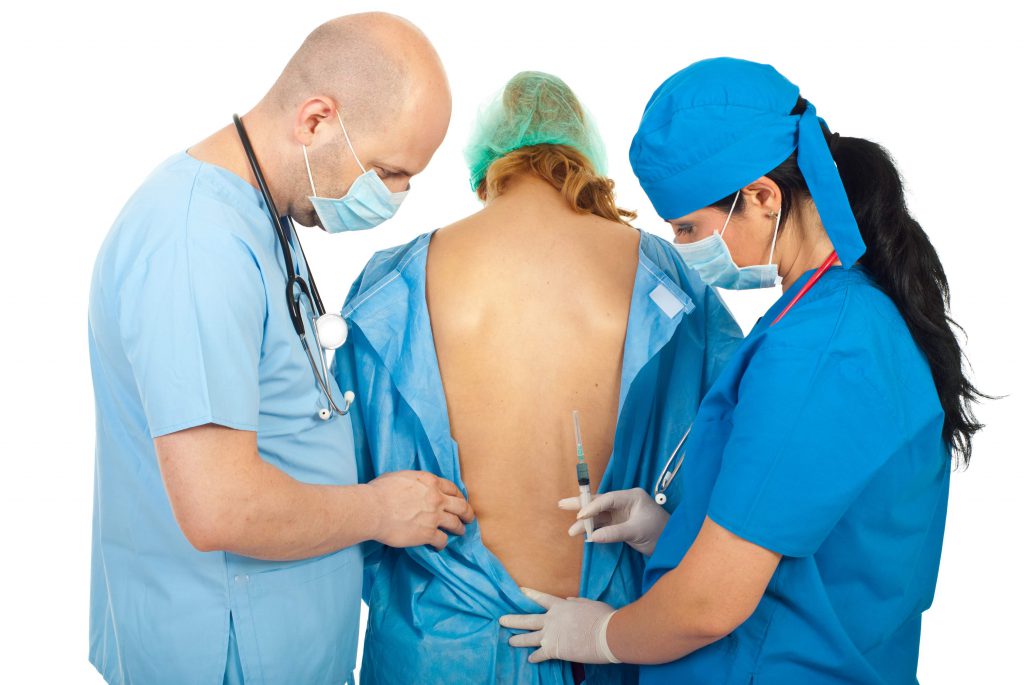 For a caesarean section, both general anesthesia and epidural anesthesia can be used.
For a caesarean section, both general anesthesia and epidural anesthesia can be used. What is the essence of the operation? Firstly, the woman is put into storage or admitted urgently in an ambulance. Secondly, the anesthesiologist asks which drugs the predominant allergy (hypersensitivity) is to, and what diseases were suffered before or during pregnancy; after which it determines whether it will be general anesthesia or epidural anesthesia. It’s worth clarifying the differences right away: in the first case, the consciousness of the woman in labor is completely switched off for the period the baby is born, and in the second, the woman remains in memory, but at the same time completely loses the sensitivity of the body and cannot control it. Both procedures have their advantages and disadvantages, but in any case they are discussed in detail with the patient individually before childbirth.
After preparing for the operation, the woman in labor is given the required dose of painkiller - anesthesia, after which the surgeon makes a 10 cm long transverse incision in the lower part of the peritoneum - directly under the pubic symphysis. He opens the connective membrane in the center with a scalpel, moves the abdominal muscles aside, cuts the uterine cavity and delivers the baby along with his placenta. After which the stitches are applied, and the operation is completed. All this time, nurses hold a sheet over the site of surgical manipulation so that the pathogenic infection does not penetrate the weakened body of the new mother.
 The entire cesarean section operation, in the absence of complications, lasts about half an hour.
The entire cesarean section operation, in the absence of complications, lasts about half an hour. If it goes away without pathologies, it usually lasts 30–40 minutes, but if there is a complication it can last for a couple of hours. The new mother is placed in the intensive care ward, where for three days she is given anesthetic, the sutures are treated, her condition is monitored, and the newborn baby is observed. At this time, the newborn remains in the children's department, but is regularly brought in for feeding.
After three days, the woman and child are transferred to a regular ward, where she will remain under strict medical supervision for another 4 days. Why so long? The fact is that caesarean babies have an increased risk of morbidity, and the mother’s stitches can only be removed on the 7th day. By the way, it’s worth clarifying that modern medicine has made an impressive step towards progress, since today you don’t have to remove stitches, they themselves dissolve over time female body. After this, you can safely go home, but do not forget that the rehabilitation period after a cesarean section at home is important.
If you are preparing for just such a birth, then it is better to find out in advance how a caesarean section works - videos of such pathological births can always be found on the World Wide Web. The footage presented to the viewer is not always optimistic, but it informs the woman how this operation is carried out and what manipulations with her body are performed by qualified specialists. And having learned how a caesarean section is performed, you will be mentally prepared and will not worry.
Life after caesarean section
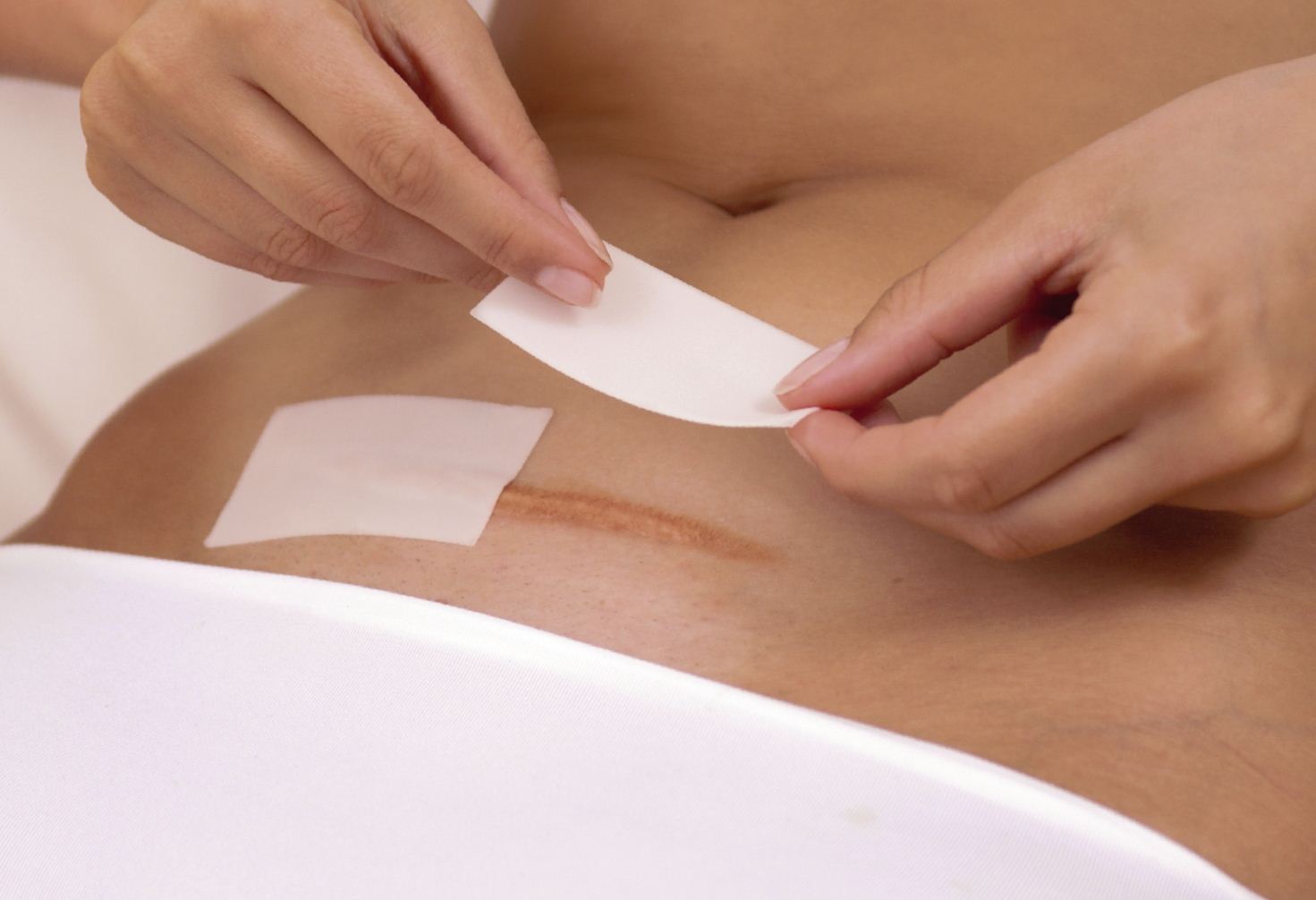 C-section associated with not very pleasant consequences - pain, limitations in exercise.
C-section associated with not very pleasant consequences - pain, limitations in exercise. Even in the maternity hospital, after the baby is born, the young mother tries to get used to the acute pain syndrome, which is especially noticeable when the effect of the painkiller weakens. In intensive care, the anesthesiologist regularly performs special injections to calm the pain, but in the general ward you have to endure it. Every day such painful sensations weaken, but still remind themselves during increased physical activity or picking up a child. So it is not always possible to cope with the baby on your own, and the help of a nurse in the maternity hospital comes in handy.
After returning home for the first month, a woman cannot even pick up her baby for fear of damaging the integrity of the sutures in the peritoneal area. That is why in such a difficult period the help of a husband, parents and relatives is so important. A young mother should avoid emotional shocks, increased activity, uncomfortable positions, and it is best to rest more and not be nervous.
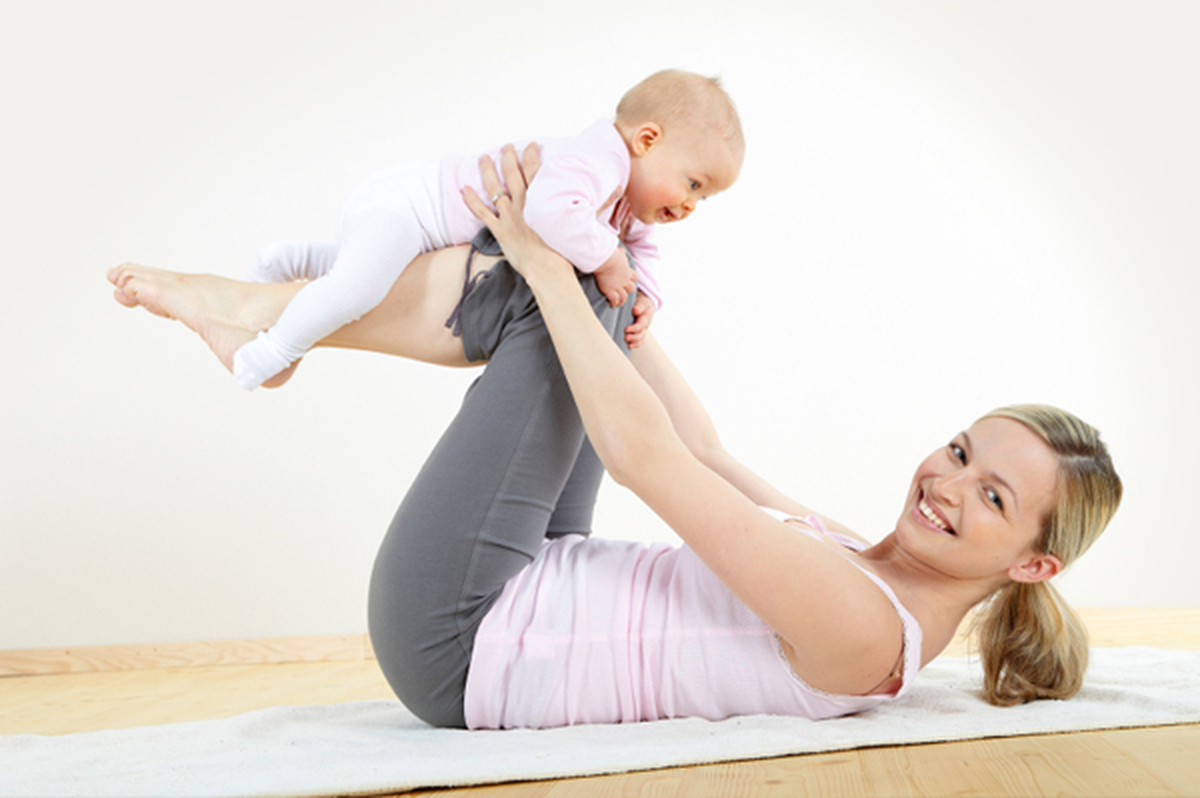 Restoring your figure after childbirth by cesarean section is possible only with light exercises, at least for the first six months.
Restoring your figure after childbirth by cesarean section is possible only with light exercises, at least for the first six months. When the baby turns 2 months old, all women after natural childbirth begin classes to restore their previous shape. As for young mothers after a cesarean section, they will have to forget about exercise and quickly getting back into shape for a long 6 months, otherwise the consequences of such disobedience may not be the most favorable for her health. The only thing that is allowed is basic breathing exercises, light exercises and leisurely yoga, which allows you to find inner harmony and passively strengthen your physical health.
After six months, a woman can finally take care of her figure, but she must understand that not everything is available to her. physical exercise. For example, it is recommended to refrain from rhythmic hula hoop rotations, exercises with dumbbells and expanders, strength training, and it is also advisable to jump rope less often. The body needs to be loaded gradually, since it needs time for natural and final recovery after a cesarean section.
Sex life after caesarean section
 Caesarean section is not an indication for long-term abstinence in the sexual life of young parents.
Caesarean section is not an indication for long-term abstinence in the sexual life of young parents. Many couples ask the same question: when is sex possible after a caesarean section? There is an opinion that after such an operation, long-term abstinence is required, which allows the young mother to finally recover from the events she experienced. In fact, this judgment is erroneous, since the suture in the abdominal cavity heals much faster than the internal sutures in the vagina; and there can be no talk of ruptures or sprains after a cesarean section, since the fetus did not move through the birth canal, as happens during natural childbirth.
That is why, as soon as the uterus stops bleeding, you can safely resume your sex life. For some couples, painful abstinence stops at 6–8 weeks, while others have to wait 10–12 weeks from the moment of birth. In general, everything depends on feelings and desire, to which, as you know, no deadlines or restrictions are a hindrance.
Important! The first sex after a cesarean section may feel somewhat different from your previous intimate life. For example, a woman experiences an acute attack of pain associated with vaginal dryness.
 It will take some time to fully recover after a caesarean section, but very soon the mother will be able to enjoy her new status and enjoy life.
It will take some time to fully recover after a caesarean section, but very soon the mother will be able to enjoy her new status and enjoy life. There is no need to panic or get upset about this, as this is a normal occurrence that takes time and patience. In addition, it is important not to forget about contraceptive methods, which will protect against re-pregnancy during the recovery period after childbirth.
It’s natural to feel fear about the upcoming birth through surgery, but you shouldn’t be too upset, because many people give birth this way. To be sure, you can meet on forums those women who have undergone a caesarean section, and photos of these young mothers and their happy babies will bring optimism to your mood. It is equally important to understand: even if the doctor recommends giving birth in this way, this does not mean that the child will be born sick or defective. This is simply a measure to preserve his life, as well as the life of his mother.
Impossible for a woman, as this can lead to serious complications and even death for the mother or baby. An alternative to physiological childbirth is a caesarean section, which, depending on the procedure, can be planned or emergency.
What is a planned caesarean section and how does it differ from an emergency one?
In some cases, surgical delivery is necessary to urgently save the life of the mother or child and is carried out on an emergency basis. Situations can be different: sometimes labor begins as usual, but during the first or second stage complications arise, and the doctor has to urgently deliver the woman in labor surgically.
A planned caesarean section (PCS) differs from an emergency one in that already in the process of carrying a baby, doctors see the reasons why a woman cannot give birth on her own and the way out of this situation is surgery. There are also situations when PCL is only a doctor’s recommendation, since physiological labor can be difficult, but a woman has every right to refuse surgery and give birth on her own.
IN recent years Most women completely refuse to give birth naturally because of the fear of pain, the unaesthetic nature of the process and the reluctance to strain, therefore they ask the doctor to perform a caesarean section without medical indications, that is, based on the patient’s wishes. Doctors categorically do not recommend resorting to surgical delivery unless there are serious indications for it. It is important to understand that cesarean is an abdominal operation, which in any case is associated with risks for the child’s mother. In addition, if a woman wants to have more children in the future, then surgical interventions on the uterus are extremely undesirable unless there are life-threatening indications, since a suture on the uterus can lead to problems with carrying a new pregnancy.
When is a planned caesarean section performed?
No doctor can tell you the exact timing of the operation, since you should always focus on the child. An elective caesarean section is performed between 39 and 40 weeks of pregnancy, a few days before the expected due date. If a woman has not had a surgical birth for the first time, then the operation is scheduled at 38 weeks of pregnancy; a longer wait is fraught with complications from the uterine scar.
How is a caesarean section performed?
First of all, the woman, together with the anesthesiologist, must decide how pain relief will be carried out. If there are no direct indications for general anesthesia, then it is best to perform a cesarean section under spinal anesthesia, then you will have the opportunity to see your child in the first seconds of his life, hug and kiss him, and hear the first cry.
On the eve of the operation and on the day of cesarean section, you must refuse any food or water intake. Before a cesarean section, the expectant mother will have to undergo unpleasant procedures - a cleansing enema and shaving of the external genitalia.
After this, the woman goes to the operating room:
- they put on a sterile gown, a cap and shoe covers for her feet;
- If spinal anesthesia has been chosen, the patient will be asked to lie on her side and tuck her knees toward her. The doctor injects an anesthetic directly into the spinal cord, as a result of which within a few minutes the woman will not feel her lower half of the body;
- After complete loss of sensation in the abdomen and legs, the surgical field is treated, then the operation begins.
The incision is made along the bikini line, the tissue is cut layer by layer. At these moments, a woman may feel as if her stomach is being pulled in different directions, but there is no pain. Everything that happens is hidden from the eyes of the woman in labor by a special operating screen. In just a couple of minutes you will hear the cry of your baby, their umbilical cord will be cut and they will definitely bring it to you to meet you. The surgical delivery procedure itself generally takes no more than 40 minutes, after which the woman is transferred to the intensive care ward, where she will have to stay for at least 2 days. Approximately 1 hour after transfer to the ward, the anesthesia will begin to wear off and the postpartum woman will feel pain in the suture area; in the first day it is quite strong, so she has to take painkillers.
How to recover after a planned cesarean section?
For the first 1-2 days after the operation, the patient is in the intensive care ward, where her condition is constantly monitored by medical staff. Since the woman is bothered by severe pain in the area of the surgical wound, injection anesthesia is acceptable for 2-3 days.
On the first day after a cesarean section, it is strictly forbidden to get out of bed on your own; only at the end of the first day the woman is helped to turn in bed from side to side. On the second day you need to get out of bed and carefully move around the ward, it is better to do this with the help of medical worker. Of course, at first any movement will cause pain, but the young mother needs to overcome herself, since restriction of movements is fraught with the development of adhesive disease.
In the absence of complications and contraindications, you can do simple gymnastic exercises already 7-8 hours after surgery:
- breathing exercises involving the anterior abdominal wall in the process (abdominal breathing);
- stroking the anterior abdominal wall clockwise;
- lower back massage;
- rotation of the feet clockwise and counterclockwise.
On the second day after surgery, the woman can sit on the bed, leaning back, so that there is no increased pressure on the suture area. When breastfeeding your baby, it is best to take a position lying on your side.
On the first day after surgery, the mother's diet should consist of liquid and semi-liquid warm food. If there is no appetite, then there is no need to force yourself to eat; in any case, the patient receives the necessary microelements and nutrients through a dropper for the first few days. Foods that can provoke increased gas formation in the intestines (legumes, cabbage, fresh bread, baked goods, green onions) are completely excluded from the diet. From about 5 days, a young mother can switch to a common table, but the diet should consist of foods that cannot harm the child if he is on breastfeeding. Discharge from the maternity hospital after cesarean section is carried out on the 7th day after the mother has the stitches removed.
Pros, cons and consequences of surgical delivery
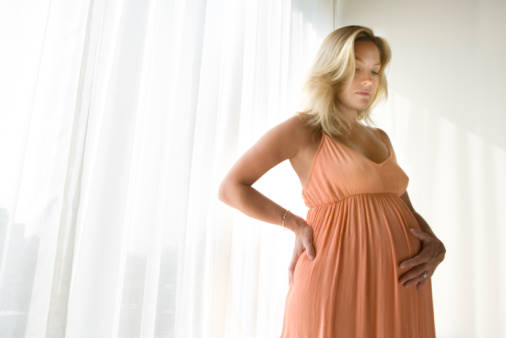
The advantages of operative delivery include the following factors:
- childbirth is quick and painless for the woman;
- the baby does not risk getting it while passing through the birth canal;
- there is no risk of perineal ruptures during childbirth.
This is probably where the advantages end, and there are many more disadvantages of surgical delivery:
- the likelihood of serious substances entering the child’s body medicines(anesthetics for anesthesia, painkillers, antibiotics);
- psychological trauma for the child - being born naturally, the baby slowly moves through the vagina, holds his breath and prepares for the upcoming meeting with his mother, while the “cesarean baby” is removed from the uterus abruptly and unceremoniously, which can lead to difficulties with breathing, the development of the immune system, establishing contact with the mother;
- risk of postoperative complications in the mother;
- the danger of anesthesia, especially if a woman has problems with her heart.
An unpleasant consequence of operative delivery for the mother can be inflammatory processes the uterus and its appendages, the formation of adhesions that disrupt the functioning of the pelvic organs, difficulties with future pregnancies.
Is physiological labor possible after surgical delivery?
Previously, it was believed that if a woman had at least one caesarean section, then the next birth was possible only surgically. Currently, doctors do not prohibit the patient from giving birth on her own, however, before giving consent to a physiological birth, a council of doctors assesses the general condition of the woman, the condition and density of the uterine scar, the general course of pregnancy and the interval between previous births. If all indicators are normal, then, under the supervision of a medical team, a woman can try to give birth on her own, but she must be prepared for the fact that emergency surgery will be required during the birth process.
Irina Levchenko, obstetrician-gynecologist, especially for the site website
Useful video about planned caesarean section
Advances in modern medicine have made this operation safe and have also reduced the risk of complications after cesarean section. There can be a lot of indications for cesarean section, some of them are absolute, but there are also relative ones. In the first case, the doctor will not consult with the patient, he will only inform her, since we are talking about the health of the mother and child. Doctors include such cases as umbilical cord prolapse, placental abruption, and transverse presentation of the fetus. Among the relative indications it should be noted large fruit, uterine scar, narrow pelvis, breech presentation. In this situation, a woman can try to give birth on her own, and the decision on the advisability of a cesarean section is made together with the attending physician.
Doctors determine the date of cesarean section. During a planned operation, the doctor recommends a date to the woman in labor, based on the condition of the fetus and the well-being of the expectant mother. Choose a day that is as close as possible to the date on which you were scheduled natural childbirth. The end date can be chosen by the woman in labor. On the eve of a cesarean section, you need to take a shower and also prepare the lightest dinner. On the day of the operation, the woman should not drink or eat. Two hours before the cesarean section, the nurse gives an enema, and just before the operation begins, a catheter is inserted into the woman’s bladder.
To relieve pain during surgery, the doctor uses spinal or epidural anesthesia, which do not have a negative effect on the fetus. During a cesarean section, the patient must be conscious, she will see the birth of the child, and after the operation she will even be able to put him to her breast. Early breastfeeding is necessary, in this way the uterus begins to contract faster and a large amount of milk is formed. The woman, of course, will not see the operation itself. Doctors will install a special barrier. Next, they will treat the abdomen with an antiseptic, make an incision in the abdominal wall, spread the muscles, make an incision in the uterus and open the amniotic sac. Then the doctor will remove the baby, cut the umbilical cord, and give the baby to the midwife. The last stage is suturing the incisions. The operation lasts from thirty to forty minutes.
If no complications arise after a cesarean section, the woman in labor is discharged seven to ten days after the operation. After cesarean section there are no special restrictions in the diet: you can eat absolutely everything that doctors recommend taking into account breastfeeding. For one and a half to two months after a cesarean section, you should avoid hot baths: doctors recommend taking only a light shower. It is also necessary to abstain from sex and heavy physical activity. Women who gave birth by cesarean section should plan their next pregnancy no sooner than two years later. During this time, the body will fully recover. If during the next pregnancy doctors do not find indications for a cesarean section, the woman will have every chance to give birth on her own.




